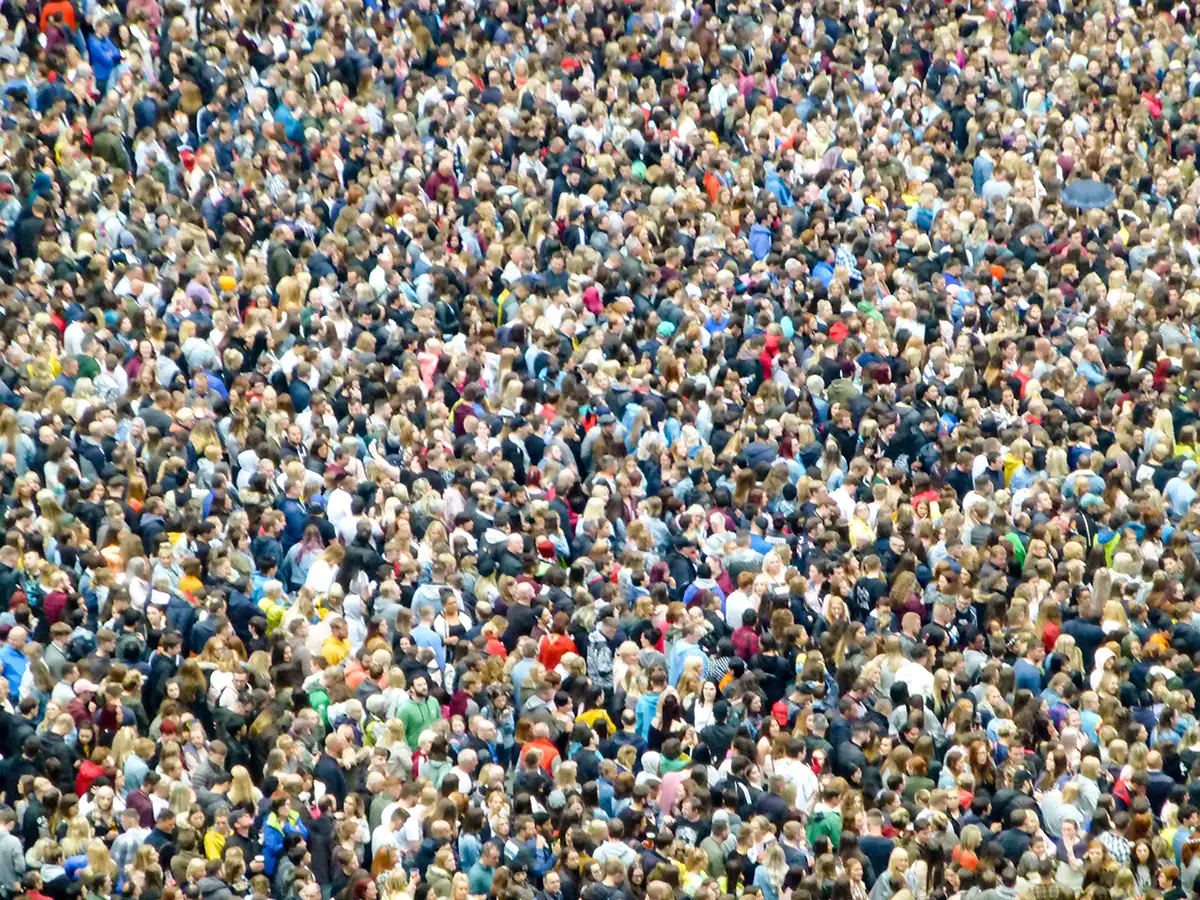The world population has increased drastically over the last 12,000 years, growing from around 4 million to 8 billion. Most of this growth has occurred in the last two hundred years. The world population was around 1 billion people in 1800. It is now more than 8 billion, 8 times larger. In the year 2037, the world population will be 9 billion. On this page we will discuss world population growth over time.

Before we delve deeper into the details of population growth, it’s important to understand the difference between relative and absolute population growth. Absolute population growth refers to the total increase in the number of people over a specific period. If the world population increases by 80 million people in a year, that’s the absolute growth. Relative population growth is the percentage change in population over time. If the world population was 8 billion and it grew by 80 million in one year, the relative growth rate would be 1%.
The distinction between absolute and relative growth is important because absolute growth provides the exact increase in population for infrastructure and resource planning, while relative growth indicates the rate of change, useful for comparing different time periods and predicting future growth. Together, they offer a comprehensive understanding of population trends.

Before 1800, the global population growth was relatively slow due to a balance between births and deaths. Human population was estimated to be around 5 million in 8000 BC, growing to approximately 200 million by the year 1 AD. The growth was slow and fluctuating, with periodic dips due to wars, diseases, and famines. By the 17th century, technological advancements in agriculture began to improve food security, leading to a slight acceleration in population growth. However, it wasn’t until the 1800s that the world saw a substantial increase in population numbers. By 1800 the global population was around 1 billion.
After 1800, the world witnessed an unprecedented increase in population growth, largely driven by the Industrial Revolution. This period was characterized by significant advancements in medicine, sanitation, and technology, which dramatically reduced mortality rates and increased life expectancy. The global population reached 2 billion in 1927, less than 130 years later. From then, the growth has been even more rapid. Today, our global population has surpassed 8 billion. Although the relative growth rate has been slowing down in recent years, the absolute number of individuals added annually remains considerable due to the size of the current population.
Predicting future population growth involves an understanding of a multitude of factors such as fertility rates, mortality rates, migration patterns, and even the impact of climate change. There is disagreement on what number will be the peak of world population, but according to the United Nations’ projections, the global population is set to reach 9.7 billion by 2050 and could peak at nearly 11 billion by 2100. However, these estimates can substantially fluctuate based on an array of variables such as advancements in healthcare, alterations in fertility rates, and significant global events like pandemics or drastic climate phenomena.
The distribution of population growth will also not be uniform across different regions. Regions like Sub-Saharan Africa are projected to witness substantial population increases , while others like Europe and East Asia might experience a decline, primarily due to aging populations and lower fertility.
The extreme world population growth carries consequences. A lot of people means a lot of consumption, and too many people means too much consumption. We invite readers to read more about population growth on this website and do their own research on these topics.
© 2024 - World Population Limitation Movement | Website by Donkeys & Co.